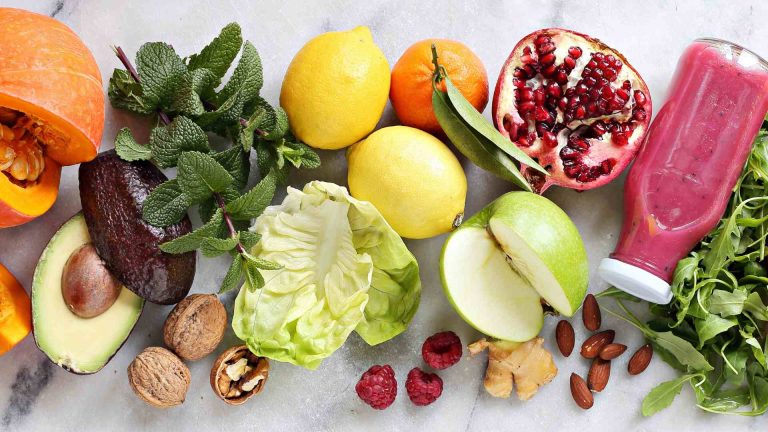How to Start a Food Blog: A Step-By-Step Guide
Starting a food blog is an exciting venture for anyone passionate about cooking, eating, or sharing culinary experiences. It’s a platform to showcase your creativity, connect with a global audience, and potentially turn your passion into a profitable business. With the right strategy, tools, and dedication, launching a food blog is more accessible than ever. This comprehensive guide walks you through every step of starting a food blog, from defining your niche to monetizing your content, ensuring you’re equipped to succeed in the vibrant world of food blogging.
What Is a Food Blog?
A food blog is a website or section of a website dedicated to all things food. It’s a digital space where bloggers share recipes, culinary tips, restaurant reviews, food photography, and personal stories about their gastronomic adventures. Food blogs can focus on various aspects, such as:
- Recipes: From vegan desserts to hearty family dinners.
- Cultural Exploration: Diving into the history and traditions of global cuisines.
- Dietary Preferences: Catering to specific diets like keto, gluten-free, or plant-based.
- Lifestyle: Combining food with travel, parenting, or wellness.
The essence of a food blog lies in its ability to blend creativity with relatability, offering readers inspiration and practical advice. Whether you’re a home cook documenting weekly meals or a seasoned chef sharing professional techniques, a food blog unites people through a shared love of food.
Why Start a Food Blog?
Before diving into the technicalities, let’s explore why starting a food blog is worth your time and effort. Here are the key motivations:
- Share Your Passion: If you love cooking, experimenting with flavors, or discovering new eateries, a food blog lets you share that enthusiasm with a like-minded community.
- Creative Expression: Blogging combines writing, photography, and recipe development, offering endless opportunities to flex your creative muscles.
- Build Connections: Food blogging opens doors to a supportive community of creators, readers, and brands, fostering collaborations and friendships.
- Potential Income: With strategies like affiliate marketing, ads, or selling digital products, your blog can evolve into a side hustle or full-time career.
- Document Your Journey: A blog serves as a digital scrapbook, preserving family recipes, travel-inspired dishes, or personal milestones.
- Help Others: Whether it’s teaching beginners to cook or offering meal prep tips, your content can make a meaningful impact.
The food blogging landscape is thriving, with over 3 million food blogs worldwide, according to industry estimates. Yet, there’s always room for a unique voice—yours.
How to Start a Food Blog: A 10-Step Guide
Here’s a detailed roadmap to launch your food blog, covering everything from conceptualization to monetization.
Step 1: Pick a Niche and Name for Your Food Blog
Your niche defines your blog’s focus and sets it apart in a crowded digital space. A well-defined niche attracts a loyal audience who share your interests. Ask yourself:
- What type of food excites me most? (e.g., baking, vegan cuisine, budget meals)
- What unique perspective can I offer? (e.g., cultural heritage, quick recipes for busy parents)
- Who is my target audience? (e.g., beginners, health enthusiasts, gourmet foodies)
Popular Food Blog Niches
| Niche | Description |
|---|---|
| Healthy Eating | Recipes for low-carb, gluten-free, or plant-based diets. |
| Regional Cuisine | Focus on dishes from a specific culture, like Italian or Thai. |
| Baking and Desserts | Cakes, cookies, and pastries for sweet-toothed readers. |
| Budget Cooking | Affordable meals for families or students. |
| Special Diets | Vegan, keto, or allergy-friendly recipes. |
Once you’ve chosen a niche, select a blog name that reflects your brand. A great name is:
- Descriptive: Hints at your niche (e.g., “Quick Bites” for fast recipes).
- Memorable: Short and catchy to stick in readers’ minds.
- Available: Check domain and social media handle availability.
Tips for Naming:
- Brainstorm keywords related to your niche (e.g., “spoon,” “plate,” “zest”).
- Use puns or alliteration for flair (e.g., “Bite Me Bakery”).
- Try tools like Namechk or Domainr to verify domain availability.
Example Names:
- Vegan Vibes
- Sizzling Southern Kitchen
- The Budget Baker
Step 2: Choose a Blogging Platform
A blogging platform is the foundation of your website, enabling you to publish content without coding expertise. Popular options include:
- Wix: User-friendly with drag-and-drop design, ideal for beginners. Offers free hosting and built-in SEO tools.
- WordPress: Highly customizable with thousands of themes and plugins. Preferred for scalability.
- Squarespace: Sleek templates for visually-driven blogs, though less flexible than WordPress.
Comparison of Blogging Platforms
| Platform | Pros | Cons | Best For |
|---|---|---|---|
| Wix | Easy to use, free hosting, SEO tools | Limited customization for advanced users | Beginners, design-focused blogs |
| WordPress | Flexible, vast plugin library | Steeper learning curve | Scalable, professional blogs |
| Squarespace | Stunning templates, mobile-friendly | Higher cost, less plugin support | Visual-first bloggers |
For food blogs, WordPress is often recommended due to its recipe plugins and SEO capabilities. However, Wix is a solid choice for those prioritizing simplicity.
Step 3: Opt for Reliable Web Hosting
Web hosting makes your blog accessible online by storing its data on servers. Many platforms, like Wix, include free hosting, but for self-hosted options like WordPress, you’ll need a provider. Key factors to consider:
- Uptime: Aim for 99.9% to ensure your blog is always available.
- Speed: Fast loading times improve user experience and SEO.
- Support: 24/7 customer service for technical issues.
Recommended Hosts for WordPress:
- Bluehost: Affordable plans starting at $2.95/month, free domain for the first year.
- SiteGround: Excellent speed and security, plans from $3.99/month.
- WP Engine: Premium hosting for growing blogs, starting at $20/month.
With Wix, hosting is free, but upgrading to a paid plan (from $17/month) unlocks custom domains and advanced features.
Step 4: Prioritize Blog Performance
A fast-loading blog keeps readers engaged and boosts SEO rankings. Google prioritizes sites that load in under 3 seconds, as slow performance leads to higher bounce rates.
Performance Tips:
- Optimize Images: Compress photos using tools like TinyPNG to reduce file size without losing quality.
- Use a Content Delivery Network (CDN): Services like Cloudflare distribute content globally for faster delivery.
- Choose a Lightweight Theme: Avoid bloated templates that slow down your site.
- Enable Caching: Plugins like WP Rocket (for WordPress) store static versions of pages for quicker access.
Wix automatically optimizes images and offers built-in speed testing tools, making performance management seamless.
Step 5: Ensure Blog Security
Security protects your blog from cyber threats and builds trust with readers. Essential security measures include:
- SSL Certificate: Encrypts data between your site and users. Most hosts provide free SSL.
- Regular Backups: Schedule automatic backups to restore your site if needed.
- Strong Passwords: Use complex passwords for admin accounts.
- Security Plugins: For WordPress, plugins like Wordfence or Sucuri block malicious attacks.
Wix includes enterprise-grade security, such as DDoS protection and constant monitoring, so you can focus on content creation.
Step 6: Design Your Food Blog
Your blog’s design should reflect your brand and captivate visitors. A visually appealing site encourages readers to explore more content.
Design Tips:
- Choose a Theme: Select a template that aligns with your niche. For example, a healthy food blog might use earthy tones, while a dessert blog could embrace vibrant colors.
- Prioritize Food Photography: High-quality images are crucial. Invest in a good camera or learn smartphone photography techniques.
- Create a Logo: Use tools like Canva or Wix Logo Maker to design a recognizable logo.
- Ensure Mobile-Friendliness: Over 50% of web traffic is mobile, so test your site’s responsiveness.
- Simplify Navigation: Include clear menus for categories like “Recipes,” “Tips,” or “About.”
Inspiration:
- Minimalist: Clean layouts with white space for recipe-focused blogs.
- Bold: Bright colors and playful fonts for dessert or fusion cuisine blogs.
- Rustic: Warm tones and textures for comfort food or farm-to-table blogs.
Wix offers mobile-optimized templates, while WordPress themes like Foodie Pro are tailored for food bloggers.
Step 7: Create Engaging Blog Content
Content is the heart of your food blog. Compelling posts keep readers coming back and improve your search engine rankings.
Content Creation Tips:
- Tell Stories: Share the inspiration behind a recipe, like a family tradition or travel experience.
- Develop a Strategy: Define goals (e.g., inspire beginners, promote healthy eating) and identify your audience’s needs.
- Use an Editorial Calendar: Plan posts in advance to maintain consistency. Tools like Trello or CoSchedule help organize schedules.
- Incorporate Visuals: Include step-by-step photos or videos to enhance engagement.
- Write Authentically: Let your personality shine to build a connection with readers.
Sample Editorial Calendar
| Date | Post Title | Category | Notes |
|---|---|---|---|
| Week 1 | Easy Vegan Stir-Fry Recipe | Recipes | Include video tutorial |
| Week 2 | Top 5 Kitchen Gadgets for Beginners | Tips | Link to affiliate products |
| Week 3 | My Trip to Tuscany: Pasta Secrets | Stories | Feature guest chef interview |
Step 8: Optimize for SEO
Search Engine Optimization (SEO) helps your blog rank higher on Google, driving organic traffic. With over 90% of clicks going to the first page of search results, SEO is critical.
SEO Best Practices:
- Keyword Research: Use tools like Ahrefs, Semrush, or Google Keyword Planner to find terms like “easy dinner recipes” or “vegan desserts.”
- On-Page SEO: Include keywords in titles, headers, and meta descriptions. For example, “Quick Vegan Chocolate Cake Recipe” is specific and searchable.
- Alt Text: Describe images for accessibility and SEO (e.g., “Close-up of vegan chocolate cake with berries”).
- Internal Linking: Link to other posts to keep readers on your site.
- Backlinks: Collaborate with other bloggers to earn links from their sites, boosting your authority.
Wix’s SEO Wiz provides a personalized plan, while WordPress plugins like Yoast SEO guide you through optimization.
Step 9: Promote Your Food Blog
Promotion increases your blog’s visibility and builds a loyal audience. Leverage multiple channels to maximize reach.
Promotion Strategies:
- Social Media: Share posts on Instagram, Pinterest, and TikTok, where food content thrives. Create reels or pins showcasing recipes.
- Email Marketing: Use Mailerlite or ConvertKit to send newsletters with new recipes or tips. Offer a free eBook to grow your list.
- Networking: Guest post on other blogs, comment on related sites, or join food blogging communities like Food Blogger Pro.
- Recipe Submission Sites: Share recipes on platforms like Yummly or Foodgawker to attract traffic.
Social Media Posting Schedule
| Platform | Frequency | Content Type |
|---|---|---|
| 3-5/week | Recipe reels, behind-the-scenes | |
| 10-15/week | Recipe pins, infographics | |
| TikTok | 2-3/week | Cooking tutorials, trends |
Step 10: Monetize Your Blog
Turning your blog into a revenue stream is achievable with the right approach. Here are proven monetization methods:
- Affiliate Marketing: Earn commissions by linking to products like cookware or ingredients. Programs include Amazon Associates or ShareASale.
- Display Ads: Join networks like Google AdSense, Mediavine, or AdThrive to earn per click or impression. Mediavine requires ~30,000 monthly page views.
- Sponsored Content: Partner with brands to create posts or social media content. Rates range from $100-$1,000+ per post.
- Digital Products: Sell eBooks, meal plans, or printables via platforms like Gumroad.
- Online Courses: Offer cooking classes to share your expertise.
Monetization Comparison
| Method | Ease of Setup | Potential Earnings | Requirements |
|---|---|---|---|
| Affiliate Marketing | Easy | $100-$1,000+/month | Quality content, audience trust |
| Display Ads | Medium | $50-$5,000+/month | High traffic (10,000+ views) |
| Sponsored Content | Medium | $100-$10,000/post | Established blog, niche fit |
| Digital Products | Hard | $500-$10,000+/month | Time to create, marketing |
How Much Does It Cost to Start a Food Blog?
Starting a food blog is affordable, with options to suit any budget. Here’s a breakdown:
- Domain Name: $10-$15/year. Free with Wix paid plans or Bluehost’s starter plan.
- Web Hosting: Free with Wix; $2.95-$20/month for WordPress hosts like Bluehost or SiteGround.
- Platform/CMS: Wix and WordPress are free (self-hosted WordPress requires hosting).
- Themes: Free to $130 for premium WordPress themes like Foodie Pro.
- Plugins/Apps: Free options available; premium plugins (e.g., Tasty Recipes) cost $30-$100/year.
- Marketing: Organic (free) or paid ads ($50-$500/month).
Sample Budget
| Item | Cost (Annual) | Notes |
|---|---|---|
| Domain | $15 | Free with hosting plans |
| Hosting | $35-$240 | Bluehost starter or Wix premium |
| Theme | $0-$130 | Free or premium (one-time cost) |
| Plugins | $0-$100 | Optional for advanced features |
| Total | $50-$485 | Varies based on choices |
You can start for as little as $50/year with a self-hosted WordPress blog or for free with Wix’s basic plan.
Food Blog Examples
Looking at successful blogs can spark inspiration. Here are a few standouts:
- Pinch of Yum: Known for approachable recipes and stunning photography, it blends personal stories with practical cooking tips.
- Sally’s Baking Addiction: A go-to for dessert lovers, offering detailed baking guides and vibrant visuals.
- What’s Gaby Cooking: Focuses on fresh, California-inspired dishes with a lifestyle twist.
- Kanh Eats: Specializes in low-carb and keto recipes, often in video format for easy home cooking.
User Reviews (Sourced from Comments and Social Media):
- Pinch of Yum: “Their recipes are so reliable, and the photos make me hungry every time!” – Instagram follower.
- Sally’s Baking Addiction: “Sally’s step-by-step instructions saved my first attempt at macarons.” – Blog commenter.
- Kanh Eats: “Love the video format—it’s like cooking with a friend!” – YouTube subscriber.
Best Practices for Successful Food Blogging
To thrive as a food blogger, adopt these habits:
- Stay Consistent: Post regularly (e.g., 1-2 times/week) to build momentum and reader trust.
- Engage Your Audience: Respond to comments and DMs to foster community.
- Invest in Photography: High-quality images drive clicks and shares. Start with a smartphone and natural lighting if budget is tight.
- Be Authentic: Share your unique voice and experiences to stand out.
- Experiment Creatively: Try new formats like video or interactive posts to keep content fresh.
- Learn SEO: Continuously refine your skills to boost visibility.
- Network: Collaborate with other bloggers for guest posts or cross-promotion.
- Track Performance: Use Google Analytics to monitor traffic and refine your strategy.
Common FAQs About Starting a Food Blog
Do food bloggers get paid?
Yes, through ads, affiliate marketing, sponsored posts, or selling products. Earnings vary from $100/month for beginners to $10,000+/month for established blogs.
Is it hard to be a food blogger?
It requires effort in content creation, photography, and promotion, but passion and consistency make it rewarding.
Can I use other people’s recipes?
You can adapt recipes with credit to the source, but avoid copying verbatim. Create original content for authenticity and SEO.
How do I make my food blog stand out?
Focus on a unique niche, high-quality visuals, and engaging storytelling. Build a personal brand that resonates with your audience.
Final Thoughts
Starting a food blog is a journey of creativity, connection, and growth. By following these steps—choosing a niche, building a user-friendly site, creating stellar content, and promoting strategically—you’ll lay a strong foundation for success. Whether you aim to share family recipes, inspire healthy eating, or build a culinary business, your food blog can become a vibrant platform to express your passion.
Ready to begin? Platforms like Wix offer an easy starting point, while WordPress provides flexibility for growth. Whatever path you choose, dive in with enthusiasm, and let your love for food shine through every post.
Please share this How to Start a Food Blog: A Step-By-Step Guide with your friends and do a comment below about your feedback.
We will meet you on next article.
Until you can read, Recipe Blog Post Checklist for Food Bloggers






This guide is super helpful! I’ve been toying with the idea of starting my own food blog, and your step-by-step breakdown makes the process feel much more manageable.
This step-by-step guide on starting a food blog is super helpful! It breaks down the process in such an easy-to-follow way. I’m feeling inspired to finally launch my own blog and share my recipes with the world. Thanks for the clear tips!
This guide is incredibly helpful—exactly what I needed to finally take the leap into food blogging! The step-by-step breakdown makes the process feel way less intimidating. Thanks for sharing such clear and actionable advice!